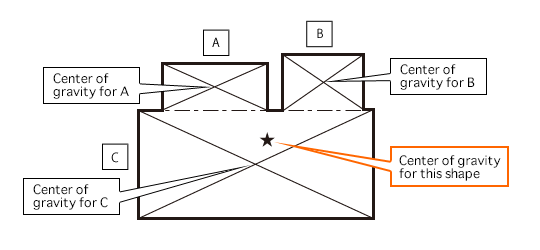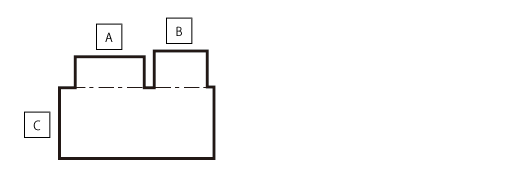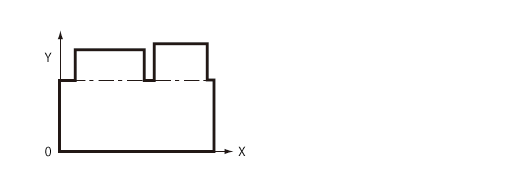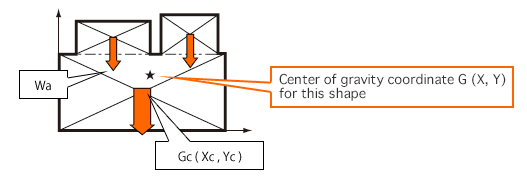#242 Mechanical Engineering and Automation Device Design - 8: Center of Gravity
To design a structure of mechanical equipment, it is necessary to consider where you design the center of gravity, such as by designing the support legs (casters) according to the gravity center of the entire unit, lowering the center of gravity for the movable body, for example. We will learn about the center of gravity in this volume.
(1) What is the center of gravity
- Every object has an equilibrium point that balances the object in any position or condition. In other words, if the object is supported at this point, the object can remain in the stable resting state in any position or condition. This point is called "center of gravity" (or "center of mass").
- The center point of a ball will be the center of gravity. The center of gravity for a planar quadrangle is the intersection of diagonal lines. The center of gravity for a triangle is the intersection of median lines.
- For a complex shape, the center of gravity is determined by considering this shape as being made up of several elementary shapes.
- The figure shown below is an aggregate of three quadrangles (A, B, and C). Each center of gravity is the intersection point of the diagonal lines. Consider that each weight applies to these three centers of gravity. Then, the point of application of their resultant force is the center of gravity.

(2) How to calculate the center of gravity for complex shapes
- Split a complex shape into an aggregate of simple shapes. Split it into three quadrangles (see the below figure).

- Define easy-to-understand X-Y orthogonal coordinates for this shape (see the below figure).

- Compute the weight of three quadrangles and name each of them as Wa, Wb, and Wc.
Each center of gravity is expressed as Ga, Gb, and Gc, respectively. Their coordinates are Ga (Xa, Ya), Gb (Xb, Yb), and Gc (Xc, Yc) accordingly.

- The entire weight is expressed as W = Wa + Wb + Wc
- Formula for the moment of force from the coordinate origin O is as follows:
Wa × Xa + Wb × Xb + Wc × Xc = W × X
Wa × Ya + Wb × Yb + Wc × Yc = W × Y
Based on the above two formulas, the center of gravity G (X, Y) will be calculated in the following formulas:
X = (Wa × Xa + Wb × Xb + Wc × Xc) ÷ W
Y = (Wa × Ya + Wb × Yb + Wc × Yc) ÷ W
- Positioning technology
- Designing and processing
- Sensor Technology
- Automation elements technology
- Clean room technology
- Design hints
- Design tips
- Designing and Machining
- Drive mechanism design
- Hints on designing
- Linear Motion Components
- Locating Technology
- Manufacturing technology
- Motion mechanism design
- Pneumatic Drives
- Production Technology
- Technology Outlook
- General description
- Low-cost automation and materials
- Transfer LCA
- #333 Know-how on automation: Pressurized heating technology - 5: Multilayer pressurized heating process technique
- #332 Know-how on automation: Pressurized heating technology - 4: Points to remember when designing mechanism of pneumatic pressurization method
- #331 Know-how on automation: Pressurized heating technology - 3: Pneumatic pressurization method and pressure profile
- #330 Know-how on automation: Pressurized heating technology - 2: Pressurization method and pressure profile
- #329 Know-how on automation: Pressurized heating technology



